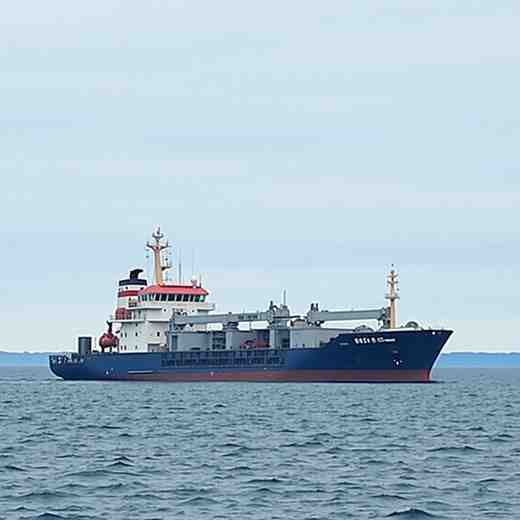
Within the latest investigation, it emerged that the ship makers going through the Bering Strait are generally conforming to the shipping requirements in 2018. These recommendations, developed as part of the U.S. - Russia cooperative plan of action in the International Maritime Organization (IMO), are intended to encourage safe and environmentally responsible transits in this ecologically fragile environment of the Arctic. This analysis is a unique scenario of peaceful collaboration between both countries in one of the major shipping routes, as geopolitical tensions involving Russia and the rest of the community are increasingly rising, and amid Russia invading Ukraine.
2018 Shipping Regulations and Adherence
The IMO developed optional shipping regulations in 2018, which protect the delicate ecosystem. Such regulations caution one not to visit particular locations and routes used in shipping water especially those sensitive in the environment. Strong compliance by cargo boats, tankers, and tugs is shown by the new research, which used data from 2015 to 2022. frequent transiting ships show greater adherence, demonstrating frequent seafarers' knowledge and duty. Migratory birds and marine animals are protected by the move away from vulnerable regions.
Growing Environmental Concerns and Maritime Traffic
From 242 transits in 2010 to 665 in 2024, ship traffic in the Bering Strait has almost quadrupled. The ecology and indigenous populations are at greater danger as a result of this increase. Because of the increasing ship closeness, Little Diomede locals describe changes to their beaches. The scholars argue that less communication between the United States and Russia could cause an accident, such as oil leaks that would prove detrimental to the environment and the livelihood of the locals.
Arctic Cooperation and the Political Context
Around the same period, in 2022, the political relations between the U.S. and Russia have seriously deteriorated. Diplomatic division can be seen as Russia does not take part in groups such as the Arctic Council. Still, the history, e.g. Cold War, has shown that even despite the adversity, cooperation on the topic of Arctic safety and preservation is possible. To increase the environmental protection measures, scientists advise to increase the size of the protected regions of the strait proposing to develop the zones of buffer zones around the Diomede Islands.
The Way Ahead
New avoidance zones might be established to safeguard indigenous interests and lessen environmental stress. Monitoring must continue, and voluntary steps must be followed. Despite political obstacles, keeping lines of communication open for discussions on marine safety and environment might avert catastrophes and promote sustained cooperation.
Significance of the Bering Strait Geographically
- The Bering Strait is the most northerly point of the Pacific Ocean.
- It connects the Chukchi Sea (part of the Arctic Ocean) to the Bering Sea (part of the Pacific Ocean) and separates the two largest landmasses by 165 trucks from Asia (Russia) and North America (United States).
- The strait is 85 km at its narrowest point, between Cape Prince of Wales and Cape Dezhnev in Russia.
- It is shallow with a mean depth of 50 meters
- Cupola, which is dominated by St. Michael and St. Gabriel and the seminary of the latter; and the St. Lawrence (p.418) Islands, the sixth in size in the United Sates, and the Diomede Islands, the Big Diomede (Russia), being separated by the International Date Line from the Little Diomede.
Month: Current Affairs - August 19, 2025
Category: current affairs daily